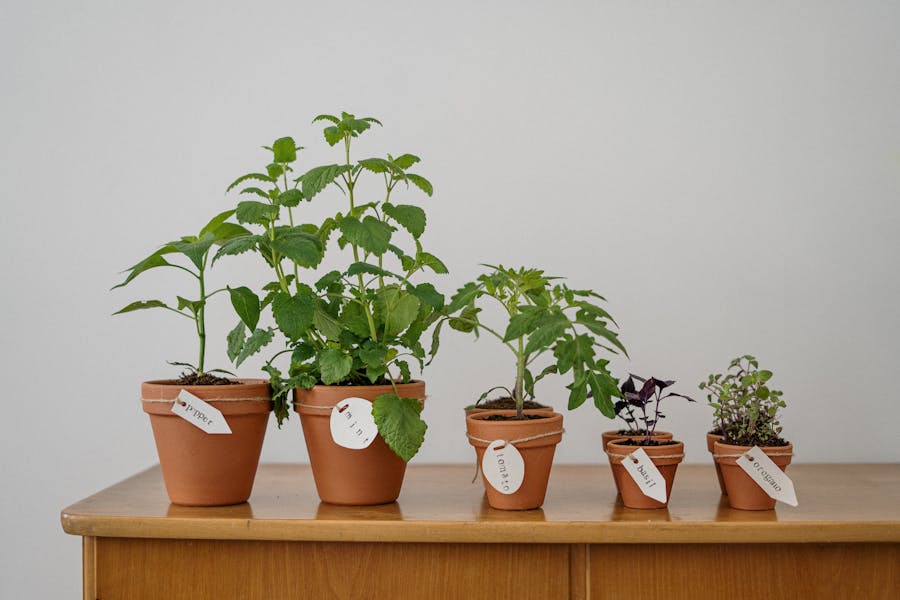Parasites are tough, but certain herbs are tougher. Just as specific drugs target specific pathogens, distinct herbs tackle particular parasites. The difference is that herbs work naturally and help avoid the collateral damage that can come with prescription medicines. (1)
Moreover, by combining parasite-killing herbs, you can take advantage of their various modes of action. For example, one may interfere with parasites’ energy production while another may attack their nervous system.
These herbs also typically come with various side benefits, such as aiding healthy bowel movement, improving bile flow, and supporting the immune system.
Overcoming a Parasitic Infection
Some parasitic infections might go away without medical treatment. This is assuming that you have good health and that your immune system immediately steps in. Genetics may also play a role in their ability to battle parasites. (2, 3)
Still, parasitic infections that resolve on their own are the exception and not the rule. What’s more, a chronic infection may have vague symptoms like joint pain, which most healthcare practitioners may not even link to parasites. (4, 5)
When microscopic protozoan parasites — such as Giardia — find a host, they can increase exponentially in number. Parasitic worms (helminths) also reproduce, albeit not as quickly. So, it takes some time and effort to get rid of most parasites as they grow in number. (6, 7)
Drugs are commonly used to treat parasitic infections because they interfere with the critters’ functioning, such as impeding the parasites’ energy metabolism or the function of their membranes. This leads to their inactivation and death. (8)
Unfortunately, antiparasitic drugs have some drawbacks, including: (9)
- Drug resistance — Parasites fight to survive and may figure out how to prevent the drug from working. For example, they may turn the drug into an inactive form or keep it from binding to its target in the pathogen. The risk of this increases the more the drug is used.
- High cost and availability — Antiparasitic drugs can be very expensive, sometimes costing hundreds or thousands of dollars per course of treatment. Plus, insurance coverage varies. And, depending on where people live, some medications may be difficult to get.
- Side effects — Examples of common side effects of antiparasitic drugs include digestive upset, headaches, and skin rashes. Some may also cause birth defects, deficiency of folate (a B vitamin), and liver damage.
Fortunately, many herbs can fight parasites in similar ways as drugs but are typically gentler on the body’s system. (10)
Parasites-Killing Herbs
Here’s an in-depth look at the potent combination of the 11 herbs that kill parasites.
1. Black Walnut Hulls
The black walnuts on the tree — Juglans nigra — have a thick green hull surrounding the shell that eventually darkens to black. Herbalists value these black hulls for their health properties.
Black walnut hulls contain an antiparasitic plant compound called juglone that may help combat some protozoans such as Acanthamoeba. This protozoan parasite lives in soil and water and can cause severe eye infections, so contact lens wearers are prone to it. This parasite can also infect the brain, lungs, and spinal cord. (11, 12, 13)
People with weakened immune systems are especially vulnerable to Acanthamoeba infection. Still, individuals can contract it even if they have a robust immune system. (14)
In a lab study, juglone put the brakes on Acanthamoeba growth and triggered them to die. (15)
Another protozoan that juglone may combat is Toxoplasma gondii. Many people carry this parasite but don’t know it, especially if they own a cat. If you have a weakened immune system, this infection can be especially problematic. (16)
- gondii may even migrate to the brain. Interestingly, the infection is 2.7 times more common in people with schizophrenia. And, it’s 2.4 times more common in people with obsessive-compulsive disorder. Still, its role (if any) in these conditions is unknown. (16, 17)
In a lab study, juglone interfered with T. gondii’s antioxidant defense systems against free radicals. This led to the death of the parasites but did not harm the host cells. (18)
On a side note, while this parasite is common in animals, don’t give black walnut hulls to cats. It could be toxic to them. (11)
2. Clove Bud
Clove — Syzygium aromaticum — is more than just a pleasant-tasting spice. Clove has been used as a natural food preservative and medicinal agent for hundreds of years. (19)
Many herbs and spices are known for their antimicrobial and antioxidant properties. But clove is especially rich in phytochemicals called phenolics, including eugenol, which contribute to clove’s many health benefits. (19)
Studies suggest clove and eugenol may help combat certain parasites and harmful bacteria.
These include:
- Babesia — This microscopic parasite is a common Lyme coinfection and invades the red blood cells. In a study of infected mice, clove extract inhibited the growth of Babesia microti by 69%. (20, 21)
- Blastocystis hominis — When this protozoan invades the intestines, it can cause abdominal pain, anal itching, and diarrhea. In a test-tube study, clove oil caused Blastocystis to shrink significantly in size. (22, 23)
- Clostridioides (Clostridium) difficile — This bacterial infection often occurs during or after antibiotic therapy. It can be resistant to drug therapy and causes severe diarrhea. Preliminary lab research suggests clove oil is effective against the bacteria. (24, 25, 26)
- Giardia — This protozoan may be best known for triggering diarrhea and stomach upset. In a lab study, clove essential oil and eugenol inhibited the growth of Giardia. Clove may also keep the critter from attaching to its host and could promote the parasite’s death. (27, 28)
- Leishmania — Lab studies suggest eugenol may combat these protozoan parasites by boosting the host’s immune system. Animal research suggests eugenol may also kill the parasite directly. (29, 30)
- Schistosoma — This blood fluke is a major source of helminth infections worldwide. In a two-month study of infected mice, eugenol reduced the number of Schistosoma flukes by 19%. It also reduced liver damage caused by the worms. (31)
- Trypanosoma cruzi — People can contract this protozoan via contact with an infected triatomine bug. This insect is found in the southern half of the United States. In a lab study, clove essential oil inhibited the growth of T. cruzi and damaged its structure. (32, 33)
Another way to combat parasites like T. cruzi that spread via insect vectors is by killing the insects. Some common examples include infected flies, mosquitoes, and ticks. (34)
Clove not only fights parasites, but it may also tackle the insects that carry them. In a lab test, clove essential oil killed mosquito larvae. Moreover, the oil worked even better than isolated eugenol, an active component of the oil. (35)
Notably, clove oil is a complex mixture of plant compounds. So, it’s less likely that insects will develop resistance to it compared to man-made insecticides. (35, 36)
3. Epazote (Wormseed)
Epazote is known scientifically as either Chenopodium ambrosioides or Dysphania ambrosioides. It’s an herb native to Central America, southern Mexico, and South America. In everyday language, epazote is also called wormseed and Mexican tea. (37)
Herbalists value epazote for its health benefits. The herb has anti-inflammatory, antioxidant, and pain-relief properties. It also helps aid the immune system to fight infections and may inhibit tumor growth. (38)
The herb’s anti-infection properties include actions against some bacteria, fungi, and parasites. (39)
In traditional medicine, the purpose of Mexican tea made with epazote is for deworming. Studies are confirming the herb’s benefits against parasitic worms, as well as protozoans. (37)
Some of the parasites that epazote may help combat include:
- Leishmania — Epazote contains powerful phytochemicals that may interfere with the mitochondrial function of the protozoan Leishmania. These phytochemicals are fat-soluble and readily-absorbed by parasites. In a lab test, the phytochemicals reached the mitochondria of Leishmania within minutes. (40)
- Other protozoans — Animal and lab research suggest epazote may help combat several other protozoan parasites. These include Entamoeba histolytica, Plasmodium falciparum (which causes malaria), and Trypanosoma cruzi. (41, 42, 43)
- Schistosoma mansoni — In a lab study, epazote essential oil killed all S. mansoni worms within 72 hours. And in a rodent study, epazote oil killed 54% of S. mansoni within nine weeks. Further treatment reduced worm eggs in the rodents’ liver by 77%. (44)
- Toxocara canis — This is a parasitic roundworm people can get from dogs. A lab study found that epazote extract was effective against the larvae of this parasite. In an animal study, the herb reduced inflammation caused by the parasite. (45, 46)
Continued research could likely confirm other antiparasitic benefits of epazote. The herb may be especially useful in cases where bacteria have become drug-resistant.
Staphylococcus aureus is a prime example of such bacteria. When scientists tested essential oil from epazote leaves against S. aureus, it didn’t directly kill the bacteria. But epazote interfered with the bacteria’s ability to get rid of the antibiotic intended to kill it. So, the drug was able to do its work against S. aureus. (47)
On its own, epazote extract may help fight bacterial infections by activating macrophages, specialized immune cells that can detect, engulf, and destroy bacteria. Plus, the herb may reduce the inflammation that happens in infections. (38)
Epazote could also be a powerful tool against fungi, including yeast. In an animal study, epazote oil resolved a vaginal Candida albicans infection in only twelve days. (48)
Even though this yeast is a normal part of the microbiome, its overgrowth can cause inflammation in the digestive tract. Candida overgrowth is also linked to Crohn’s disease and ulcerative colitis. (49)
In addition, a lab study suggests epazote may help break up biofilm on some surfaces. The immune system is better able to kill Candida if it isn’t hiding in biofilm. (50)
4. Holarrhena
Holarrhena antidysenterica, sometimes called kutaj or kurchi bark, comes from a shrub and is used in Ayurvedic medicine. It’s also used in special festivals in India. (51)
The herb contains many phytochemicals, including alkaloids and tannins, which may be responsible for these effects. (52)
These alkaloids may attack the worms’ nervous system and paralyze them, and the tannins could potentially interfere with parasites’ ability to generate energy. Blocking both their movement and energy production makes holarrhena helpful against parasites. (53)
Holarrhena may also help stimulate the bowels and promote regular bowel movements, helping people expel the dead parasites. Plus, it might alleviate constipation and diarrhea, due to its antidiarrheal properties. (53, 54)
Other research suggests holarrhena helps kill some protozoan parasites. When people took powdered holarrhena bark for 15 days, they were free of infection with Entamoeba histolytica. (55)
Here are other potential health benefits of holarrhena:
- May help heal hemorrhoids — Some gut issues can lead to straining to eliminate stools. This may result in hemorrhoids. One study found that when people took holarrhena bark extract, it helped heal bleeding hemorrhoids. (55)
- May protect brain health — Holarrhena may inhibit the breakdown of acetylcholine, a vital nerve messenger. For this reason, it’s being studied as a potential therapy in Alzheimer’s disease and other neurological conditions. (56)
- May protect against free radicals — The many phytochemicals in holarrhena contribute to its potent antioxidant effects. Animal studies also suggest it may help increase levels of glutathione and superoxide dismutase — two antioxidants the body can make. (55)
5. Holy Basil
Known as either Ocimum sanctum or Ocimum tenuiflorum, holy basil is commonly used in herbal tea and supplements due to its believed health properties. It’s considered an adaptogen, which can help promote overall well-being and resilience, including against stress. (57)
In common lingo, it’s also called tulsi, and it’s not to be confused with regular basil. In Ayurvedic medicine, holy basil is called “Queen of Herbs.” For example, extracts of the herb are used in Ayurvedic remedies for inflammation, malaria, and stomach problems. (57, 58)
Scientific studies on animals showcase the antiparasitic properties of holy basil. These include actions against certain protozoans and helminths. (59)
Plasmodium protozoan parasites can cause malaria, and Plasmodium falciparum is the species that causes the most severe infections in people. It has become drug-resistant, so scientists are turning to herbs for remedies. (60, 61)
In a lab study, leaf and root extracts of holy basil were very effective against Plasmodium falciparum. Yet, the extracts didn’t harm human red blood cells. The parasite invades and multiplies in red blood cells, so it’s important that the herb doesn’t damage the cells. (62)
Another protozoan parasite that holy basil may help combat is Leishmania. This parasite can damage some of the organs, including the liver. One way holy basil may combat Leishmania is by boosting the body’s own immune defenses against the parasite. (63, 64)
In one study, mice infected with Leishmania were given an extract of holy basil leaves. The herb reduced parasite levels in the animals’ liver by 43% after one day and by 73% after 15 days of treatment. (65)
Holy basil may also combat parasitic helminths in the digestive tract, including nematodes (roundworms). In an animal study, scientists tested holy basil leaf extract in sheep infected with gut parasites. Specifically, they had four nematodes: Haemonchus, Oesophagostomum, Strongyloides, and Trichostrongylus. (66)
Holy basil decreased the animals’ excretion of nematode eggs by 77% in two weeks. The herb also paralyzed parasite larvae and halted their development, decreasing the reproduction of the worms and shut down the activity of immature worms. (66)
Additionally, antioxidants in the sheep’s blood increased during the study. This extra defense may reduce oxidative stress and damage during a parasite cleanse. (66)
Holy basil’s antioxidant properties and antiparasitic actions against worms like Strongyloides may be due to its many phytochemicals. These include flavonoids, tannins, and several others, which could be potent weapons in a natural parasite cleanse. (62, 66)
6. Neem
Also known as Azadirachta indica, this fast-growing tree is nicknamed “the village pharmacy” since every part of it has potential health benefits for multiple diseases. That includes the bark, fruits, leaves, oil, seeds, and roots of neem. (67)
Neem’s has been used in Ayurvedic medicine for more than 4,000 years. Research has indicated that it’s packed with more than 300 different phytochemicals, some of which may help combat parasites. (67, 68, 69)
Both lab and animal studies have shown that neem has antiparasitic actions against helminths, including ones that invade the digestive tract. (70, 71)
A phytochemical in neem called azadirachtin is toxic to the nervous system of parasites. This phytochemical also promotes their excretion in stools. (72, 73)
Additionally, neem is traditionally used in some African countries for the prevention and treatment of malaria. This antimalarial benefit has been shown in animal studies as well. (74, 75, 76)
Other potential benefits of neem include:
- Anti-inflammatory actions — Parasites create damaging inflammation in the gut and elsewhere in the body. The mast cells and other immune cells release histamine and other inflammatory chemicals when they sense a threat. Animal research suggests neem seed oil may significantly reduce the release of inflammatory chemicals. (77, 78, 79)
- Antioxidant and anticancer properties — Laboratory and animal studies show that neem has powerful antioxidant properties, helps prevent DNA damage, and may help reduce cancer risk. (80)
- Help increase bile flow and aid detox — Parasites spew toxins, and the liver processes toxins from the blood and then releases them into bile. An animal study found that a neem leaf extract nearly doubled bile flow to support toxin elimination and liver health. (68)
- Help prevent biofilm formation — Bacteria, candida, parasites, and other pathogens can hide from the immune system and antibiotics by forming a protective biofilm. Lab research suggests neem may help disrupt the formation and structure of biofilm. (81)
7. Sage
Salvia officinalis or sage has gray-green leaves and is an herb native to the Middle East and Mediterranean region. As an herb to add flavor to roasted vegetables or soup, it also can support health.
Sage contains many phytochemicals, including flavonoids and tannins. It’s been used in folk medicine for diarrhea and upset stomach, among other ailments. (82, 83)
Now, animal research is confirming that sage may help combat diarrhea by fending off bacteria and fungi like Candida that can cause chronic diarrhea. (83, 85)
Sage could help in parasite cleanses and support liver health as well.
In an animal study, sage extract significantly reduced the number of eggs of three intestinal helminth parasites in only five days. These included two types of pinworms and one type of tapeworm. (82)
Lab studies also suggest sage extracts may combat microscopic protozoan parasites. Sage may be effective against the following protozoans: (86, 87)
- Leishmania — Skin sores are a common symptom of infection with this parasite. It can also infect the bone marrow, as well as the liver and spleen. This can cause internal swelling of the organs.
- Plasmodium — This protozoan causes malaria, which is transmitted by infected mosquitoes and can cause fever and flu-like symptoms.
- Trypanosoma cruzi — Infection with this parasite leads to Chagas disease, which may trigger eyelid swelling. Over the long term, it can also cause heart problems and enlargement of the colon and esophagus.
Sage may also help indirectly against parasites by supporting the liver. Common parasites — including Plasmodium protozoans and Schistosoma flukes — can damage the liver.
When rodents were given sage tea instead of water for two weeks, their liver antioxidant activity increased by 10–24%. Sage helped protect the membranes of liver cells from oxidative damage. (88)
People need a well-functioning liver for overall health, as well as to deal with the toxins released during a parasite cleanse, which may help ease symptoms of parasite die-off. (89)
8. Tansy
Tanacetum vulgare or common tansy has fern-like leaves and yellow flowers. Popular in folk medicine, this herb has been used to ease nerve pain, lower inflammation, relieve migraines, and treat parasitic infections. (90, 91)
Research also confirms the benefits of tansy extract against parasites, and it may be particularly effective against Schistosoma mansoni, a fluke or worm that has a flattened, leaf-shaped body. (90)
People can become infected with S. mansoni by contact with contaminated freshwater, such as by swimming in it. The parasite is most common in tropical and subtropical countries and can cause anemia and diarrhea. It can also damage the liver and intestines over the long term. (92, 93)
- mansoni may survive for decades inside the blood vessels. However, in a lab study, tansy extract significantly reduced the worms’ ability to move. And when tested in a high dose, the extract killed 100% of the adult worms within 24 hours. (94)
Tansy extract also decreased the number of worm eggs, as well as hampering the development of the eggs. (90)
Additionally, the essential oil from tansy flowers contains chemical compounds that may help to repel ticks. Since ticks are vectors, transmitting parasites and bacteria, so repelling them helps safeguard people from infection with these pathogens. (95)
9. Thyme
Thyme, or Thymus vulgaris, is a popular culinary herb that contains several potent phytochemicals, like eugenol and thymol. This herb has been tested against several different types of parasites, including certain helminths and protozoan parasites. (96)
Studies suggest thyme may help combat:
- Anisakis — People can contract this parasitic roundworm by eating infected seafood that is raw or undercooked. In a lab study, thyme essential oil killed all Anisakis larvae within 14 hours by damaging the worms’ outer covering and intestines. (97, 98)
- Entamoeba histolytica — People may get this protozoan by eating food touched by contaminated hands, as it’s carried in feces. It infects the gut and can spread to other organs, including the liver. Lab research found thyme extract and essential oil were effective against the parasite. (99, 100)
- Leishmania — As stated previously, these protozoan parasites are transmitted by infected sand flies and cause skin sores. In a mouse study, thyme extract produced a 43% reduction in skin sores caused by the parasite. Three other herbs tested were less effective. (63, 101)
- Toxoplasmosis gondii — People may get this protozoan parasite from infected cats, among other routes, and it can invade the brain and eyes. In mice with a chronic infection of T. gondii, thyme extract reduced parasitic cysts in the brain by 24%. (16, 102)
- Trichinella spiralis — People can contract this roundworm by eating infected, undercooked pork. It can cause digestive upset and migrate into the muscles. In an animal study, thyme killed 79% of adult T. spiralis worms and 71% of larvae. (103, 104)
Thyme also has antibacterial and antifungal properties. Lab studies suggest thyme may help prevent the growth of potentially problematic bacteria. These include harmful strains of: (104, 105, 106)
- Bacillus cereus
- Clostridium perfringens
- Escherichia coli
- Listeria monocytogenes
- Staphylococcus aureus
People can pick up harmful strains of these bacteria by consuming contaminated foods and beverages. This is particularly true if they are undercooked or improperly handled. For example, C. perfringens is one of the top five causes of food poisoning in the United States.(107)
Lab studies suggest thyme inhibits the growth of Clostridium perfringens. In one study, essential oil from thyme leaves was more effective against the bacteria than five other essential oils tested. (106)
Additionally, research suggests thyme oil may reduce the replication of harmful strains of E. coli, Listeria, and S. aureus. Even when thyme is only present in low amounts, it may reduce the growth of these pathogenic bacteria. (108)
Thyme might fight Candida albicans as well. Lab studies suggest thyme may reduce enzymes that candida needs for its metabolism and the colonization of its host. Thyme may also decrease the yeast’s ability to form a biofilm. (109, 110, 111)
10. Triphala
In the Sanskrit language, triphala means “three fruits.” This ancient Ayurvedic remedy is a combination of dried fruits from three herbs, which are generally used in equal proportions: (112)
- Amalaki or Indian gooseberry (Emblica officinalis)
- Bibhitaki (Terminalia bellerica)
- Haritaki (Terminalia chebula)
Together, they are a powerful combination. In Ayurvedic medicine, triphala is a go-to remedy for supporting digestive health, among many other aspects of wellness. (112)
Parasites often enter the body through the digestive system, which starts with the mouth. Once they get in, they can damage the lining of the digestive tract and may cause digestive problems in the host. (113, 114)
Triphala could help defend against parasites in several ways. Studies suggest it may:
- Guard against parasitic helminths — Each component of triphala helps protect against helminths. However, the combination of its three ingredients is more effective against parasitic worms than each herb alone. (115)
- Promote a healthy microbiome — Triphala may help the good gut bacteria flourish. Some beneficial bacteria produce an anti-inflammatory short-chain fatty acid called butyrate, which promotes a healthy gut lining. A healthy microbiome can also help guard against parasites. (116, 117, 118)
- Protect against protozoan parasites — Triphala contains alkaloid and flavonoid types of phytochemicals, which help kill protozoans. (119)
- Support regular bowel movements — An essential part of fixing a parasite problem is regular elimination. In one study, 160 people took 2.5 grams of triphala twice daily or a placebo for one month. Triphala helped improve the amount, consistency, and frequency of bowel movements compared to the placebo. (120)
Triphala may support health in other ways as well. Studies suggest it may help:
- Prevent cancer — Lab studies suggest that triphala could potentially help protect people from cancer, including colon cancer. This protection may be due in part to the many phytochemicals it contains. (121)
- Provide antioxidant protection — Polyphenols and other phytochemicals in triphala have antioxidant actions. These may support the health of the gut lining and protect against stomach ulcers, as well as shield the kidneys from toxins. (122, 123, 124)
- Protect the joints — Triphala’s ability to increase antioxidant levels could help protect the joints. Additionally, the protozoan parasite Cryptosporidium hominis has been linked to joint pain. (5, 125)
- Regulate blood sugar — Triphala may inhibit starch digestion and absorption, which could result in better blood sugar control. When people took 5 grams of triphala daily, it significantly lowered their fasting and post-meal blood sugars in a 45-day study. (112)
- Support the immune system — Triphala is an adaptogen, meaning it may help the body adapt to various stressors. It’s also an immunomodulator that helps stimulate or suppress the immune system, depending on the body’s needs. (126)
11. Vidanga
Embelia ribes is the scientific name for this little shrub that commonly grows in India. Vidanga is also known as “false pepper” since its fruits look similar to black peppercorns. (127)
Vidanga is an essential herb Ayurvedic medicine, with many potential health benefits. In fact, it’s used in more than 75 different Ayurvedic remedies. (127)
Vidanga’s fruits contain powerful phytochemicals, including tannins, which makes it powerful against parasites like helminths. These tannins help prevent helminths from generating energy, and the phytochemicals may also bind to proteins on the protective outer covering of helminths. These actions lead to the parasites’ death. (128)
Research suggests vidanga is effective against tapeworms. This parasite absorbs its nutrients and expels wastes through its outer covering or tegument. (128)
Additionally, in a lab study, a vidanga fruit extract was up to 85% effective against the helminth Haemonchus contortus in the larval stage. This was similar in effectiveness to a common antiparasitic drug. (129)
Moreover, the larval stage is an ideal time to kill the critters since they’re too immature to reproduce. (129)
Studies suggest vidanga may have several health benefits beyond its antiparasitic activity. Some of these potential benefits include:
- Acetylcholine protection — Parasites can interfere with neurotransmitters, including acetylcholine, which supports memory and mood. Research suggests vidanga root extract may help prevent the breakdown of acetylcholine. This could help ward off the negative emotional effects parasites can have. (130, 131)
- Antifungal — Lab research suggests an extract of vidanga fruit may help combat fungal infections. This includes the mold Aspergillus niger, which can infect people and the common yeast Candida albicans. (127, 132)
- Digestive support — Vidanga may help reduce gas production in the gut and stimulate the bowels to move. This will help expel dying parasites from the gut as quickly as possible. (133)
- Thyroid health — A sluggish thyroid can cause hair loss and constipation, which hinders parasite cleansing efforts. When 15 people with hypothyroidism took a vidanga supplement, all of them had mild to moderate improvement in thyroid function. (134)
- Tissue healing — The inflammation and toxins that parasites generate can damage tissues. In an animal study, a vidanga leaf extract applied topically helped heal wounds as well as a standard medicinal ointment. It also supported collagen production. (135)







